Fellinis Casanova
7.6 /10 1 Votes
80% Rotten Tomatoes Genre Biography, Drama, History Cinematography Giuseppe Rotunno Country Italy | 7.1/10 IMDb Director Federico Fellini Story by Giacomo Casanova Duration | |||||||||||||||||||||||||||||||||
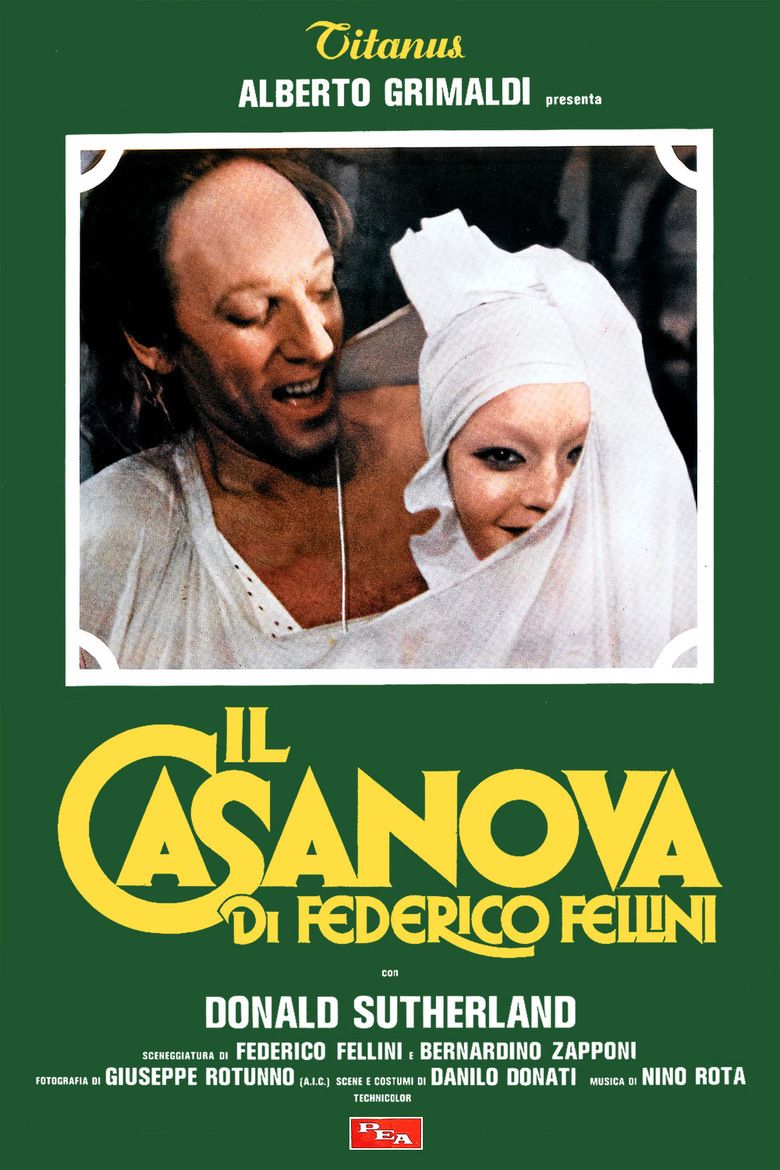 | ||||||||||||||||||||||||||||||||||
Language Italian
English
French
German Release date 7 December 1976 (1976-12-07) (Italy) Based on Histoire de ma vie
by Giacomo Casanova Writer Giacomo Casanova (autobiography "Storia della mia vita"), Federico Fellini (screenplay), Bernardino Zapponi (screenplay) Cast Donald Sutherland (Giacomo Casanova), Tina Aumont (Henriette), Cicely Browne (Madame D'Urfé), Carmen Scarpitta (Madame Charpillon), Clara Algranti (Marcolina), Daniela Gatti (Giselda)Similar movies Dallas Buyers Club , The Wolf of Wall Street , The Theory of Everything , The Walk , Goodfellas , Straight Outta Compton | ||||||||||||||||||||||||||||||||||
Fellini s casanova 1976
Fellini's Casanova (Il Casanova di Federico Fellini) is a 1976 Italian film by director Federico Fellini, adapted from the autobiography of Giacomo Casanova, the 18th-century adventurer and writer.
Contents
- Fellini s casanova 1976
- Fellini s casanova trailer
- Plot
- Cast
- Production
- Style
- Awards and nominations
- In popular culture
- References
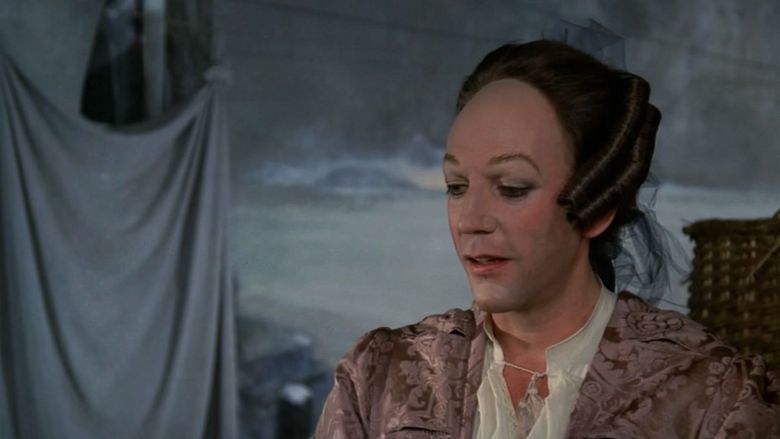
Shot entirely at the Cinecittà studios in Rome, the film won an Academy Award for Best Costume Design, with the Oscar going to Danilo Donati.
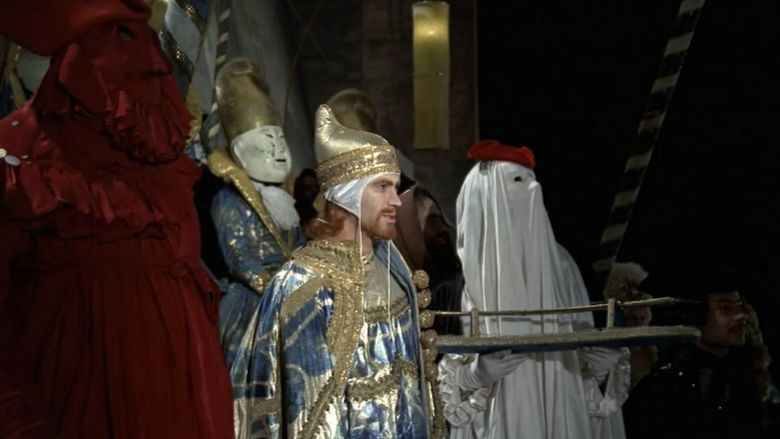
The film portrays Casanova's life as a journey into trivial sexual abandonment. Any meaningful emotion or sensuality is eclipsed by increasingly strange situations. The narrative presents Casanova's adventures in a detached, methodical fashion, as the respect for which he yearns is constantly undermined by his more basic urges.

Fellini s casanova trailer
Plot
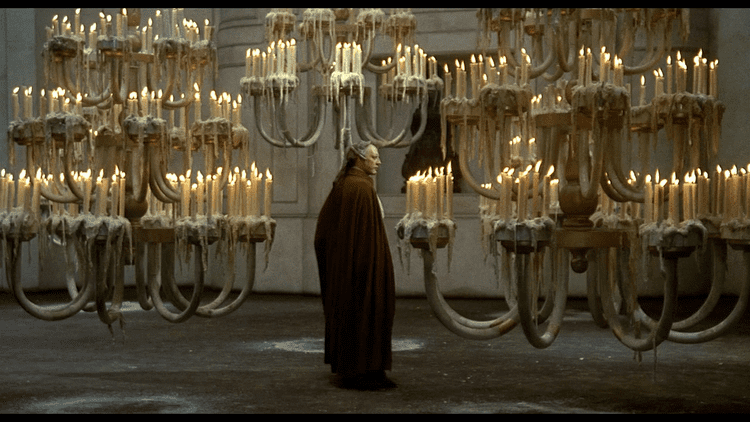
The film opens with a carnival in Venice as a prelude to a series of erotic encounters that follow Giacomo Casanova through the cities of 18th-century Europe. The organizers of the festival attempt to raise a gigantic bust from the water; this fails, which is taken as a bad omen. Casanova is then introduced, as he visits one of Venice's islands to copulate with a fake nun for the pleasure of a rich voyeur; Casanova succeeds in entertaining him, but is frustrated that the man finds no interest in his research into alchemy and his further scheming. As he rows back to the mainland, Casanova is arrested, judged and imprisoned by the High Court over his famed debauchery.
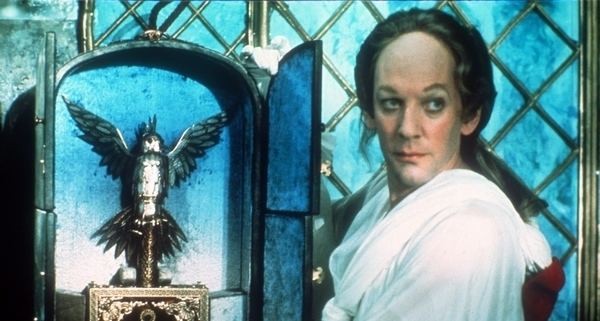
During his time in prison, Casanova reminisces of his affairs with a seamstress and later on with one of her servants, Anna Maria, who suffers from frequent fainting and requires constant bloodletting. He eventually consummates his desire for Anna Maria. Back in prison, Casanova escapes through the roof and exiles himself from Venice, being taken into the Paris court of Madame d'Urfé. The Madame, an aged woman, enthralled by Casanova's apparent knowledge of alchemy, wishes to transform her soul into a man's through ritualistic intercourse with him (an act that requires the presence of a younger woman in the room, so that Casanova can get aroused). Casanova then moves to the court of a hunchback, Du Bois, in between taking charge of a beautiful girl—"the love of [his] life"—Henriette. Du Bois puts on a homosexual theatrical performance for his guests that unsettles some of them; Casanova is brought to tears as Henriette plays some music. The lovers vow fidelity to each other, but the following morning Henriette has disappeared. Du Bois informs Casanova that an emissary of a far-away court has reclaimed Henriette, and she's left a request that Casanova not attempt to follow her.

While in London, Casanova is robbed by two women and he attempts suicide by drowning himself in the Thames. A vision of a giantess and two dwarves distracts him; he follows them to a frost fair, where he arm-wrestles the giantess—a princess—and later pays to watch her bathe with the dwarves. Casanova resumes his travelling the following day. He attends a deranged party at Lord Talou's palace in Rome, where he wins a bet with a stagecoach driver, Righetto, over how many orgasms he can have in one hour. The competition brings him higher acclaim. In Switzerland he falls in love with an alchemist's daughter, Isabella, who fails to keep an appointment to go to Dresden with him; Casanova instead partakes in an orgy within the hostel he's been stranded. In Dresden, he has a brief, chance encounter with his estranged mother in a theater. He then moves to a court in Württemberg, where his desire to be taken seriously as a writer/inventor is frustrated by the court's orgiastic, wild nature. It is here that he meets Rosalba, a mechanical doll with whom he shares a dance and later on goes to bed with.
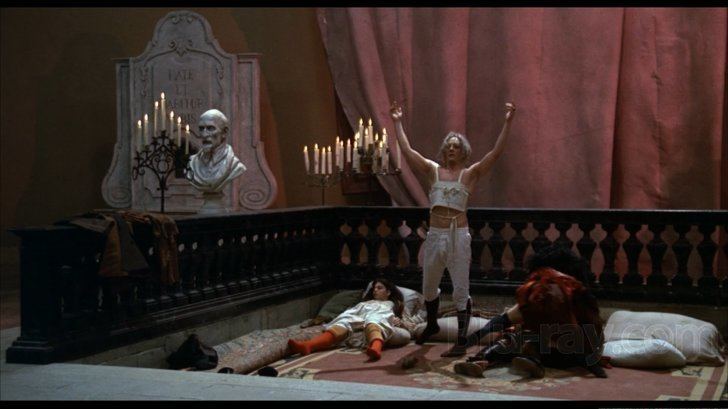
Times goes by and an old Casanova finds himself librarian to Count Waldstein at his castle in Dux. Life at the castle is more than frustrating for Casanova, as he is made to eat with other servants and does not get the respect nor the food he claims to deserve. Waldstein's manservant, Faulkircher, and his lover Vidarol, make him object of mockery and animosity. A portrait of him is hanged and defecated on. Later on, during a fervent poetry recital, a court member fails to suppress a giggle at Casanova, who, humiliated and disappointed, goes back up to his room. The final scene has a weary, bloodshot Casanova cringeing in an armchair and recounting a recent dream. In this dream, Casanova is back in Venice. He catches a glimpse of the giant bust seen in the beginning of the film, buried under thick layers of ice in the lagoon. He chases the ghosts of his past lovers, all of whom disappear. An ornate stagecoach beckons him to join its passengers. He finally meets with Rosalba, the mechanical doll, once again. They quietly dance with each other.
Cast
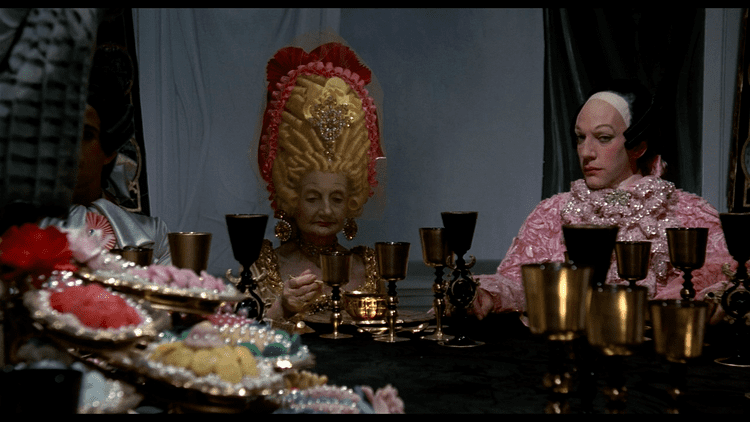
Production
Producer Dino De Laurentiis saw Robert Redford in the role of Casanova but Fellini refused to cast him. Jack Nicholson, Marcello Mastroianni, Alberto Sordi and Gian Maria Volontè were also considered for the role. When De Laurentiis bowed out of the project and Fellini signed a new contract with producer Alberto Grimaldi, Donald Sutherland was cast in the role, requiring that he shave his head and wear both prosthetic nose and chin.
Fellini had to re-shoot parts of this movie, including the elaborate Venice carnival scene, when approximately seventy reels of film—including the first three weeks of shooting—were stolen at the Technicolor labs of Tiburtino, Rome, on August 27, 1975. The thieves were apparently interested in Pasolini's Salò, or the 120 Days of Sodom (1975), and some reels of this film were also stolen, along with half of Damiano Damiani's spaghetti western A Genius, Two Partners and a Dupe (1975).
Music was composed by Nino Rota, a frequent Fellini collaborator.
Style
Fellini’s Casanova is noted for its symbolic, highly stylised mise en scène and the casting of Donald Sutherland in the lead role.
By using a range of visual effects, Fellini attempted to depict Casanova as a debauched figure incapable of displaying any genuine emotion. This Felliniesque style is most noticeable in Sutherland’s acting and appearance, which was made overtly graphic at the director's request. Other unusual techniques include a scene where Sutherland rows across a stormy sea made from black plastic sheets.
Fellini’s dislike of the character was well documented, and in one interview he even referred to exposing "the void" of Casanova's life. Consequently, Fellini’s interpretation goes against the traditional notion of Casanova as an enlightened gadabout. The original script was very brutal on the historical figure. It wasn't until Fellini shot the scene of Casanova and the nun that he began to sympathize with Casanova's inability to love, giving him the character of the mechanical doll and the dream ending.
Awards and nominations
1977 Academy Award, United States
1977 David di Donatello Awards, Italy
1978 BAFTA, Great Britain
In popular culture
References
Fellini's Casanova WikipediaFellinis Casanova IMDbFellinis Casanova Rotten TomatoesFellinis Casanova themoviedb.org
